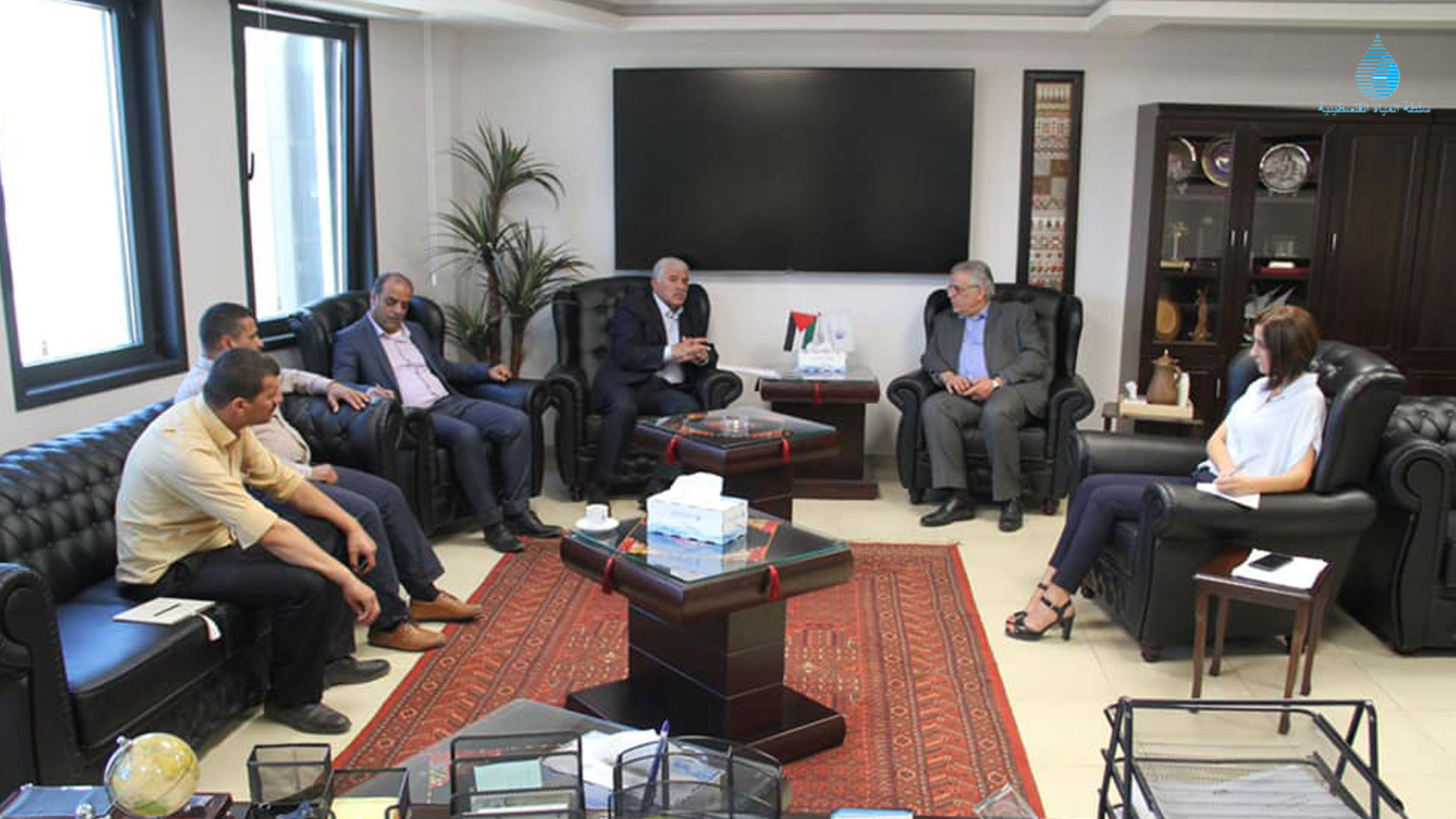Ramallah: The Head of the Water Authority, Eng. Mazen Ghunaim affirmed that the Water Authority attaches particular importance to Tubas governorate in water and sanitation projects in the light of the occupation government's fierce settlement war against the province.
This came during Eng. Ghunaim meeting with Governor of Tubas, Major General Younis Alaas and his accompanying delegation at the headquarters of the Water Authority in Ramallah.
Minister Ghunaim said that the Northern Valley region is considered within the largest eastern water basin in Palestine; the occupation controls more than 85% of its waters; as most of the settlement in the governorate are agricultural settlements , and the occupation authorities close dozens of water holes, and destroy hundreds of meters of water lines, which causes water crisis.
Eng. Ghunaim indicated that the occupation authorities do not allow licenses to dig water wells for the Palestinians, regardless of their depth; while the occupation is digging wells, to provide the settlements with water throughout the year and 24 hours a day, which has led to the drying of dozens of Palestinian wells and springs in the area.
Eng. Ghunaim stressed that the Water Authority is working according to systematic plans to construct projects and programs aimed at stabilizing citizens on their lands, especially those threatened by the occupation, pointing to the opening of the sewage system project and treatment plant to serve Tubas, a few months ago, which achieves a qualitative shift in the level of water and sanitation services in the province, in addition to water projects implemented during the past years.
For his part, Major General Younis Alaas stressed that the governorate faces many risks, in light of settlement expansion, persecution of residents, demolition of communities, and thirst for residents, even though the governorate is located on the eastern water basin.
Major General Younis Alaas called for the provision of more water and sanitation projects, to strengthen the resilience of the population, and the continuation of agriculture in the area.
